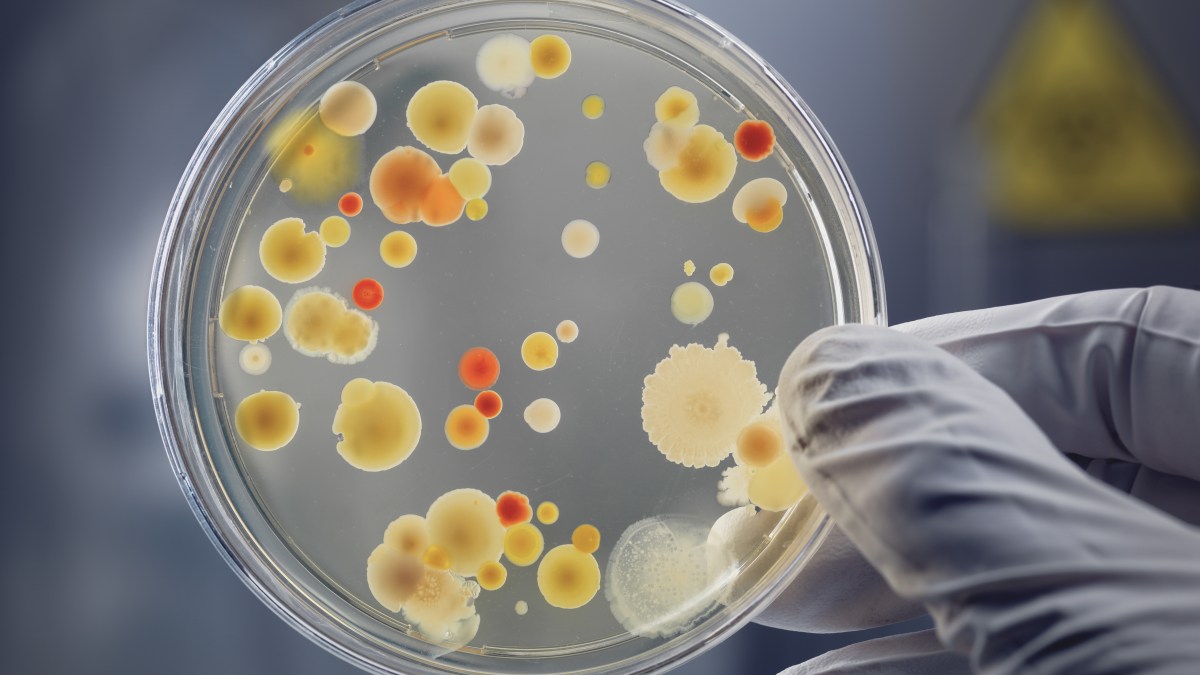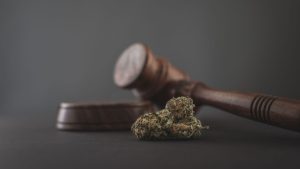The 20th century saw several critical discoveries that completely changed the face of health care. Among the most important discoveries was penicillin, one of the antibiotics that are still in use today. However, the emergence and spread of drug-resistant pathogens threaten to wipe out the gains made over the last century. The discovery of penicillin in 1928 by Sir Alexander Fleming marked the beginning of the antibiotic revolution (1). But it’s the aptly named “golden era of antibiotics” period between the 1950s and 1970s that witnessed the discovery of many novel antibiotics. After that period, drug research changed to focusing on modifying existing antibiotics. Antibiotics have had a success story like no other in the history of medicine. For example, the leading cause of death in the western world changed from infectious diseases to non-communicable diseases (1), and life expectancy increased by at least ten years due to antibiotic use
(2). That success didn’t last long as bacteria followed by fungi and viruses began developing resistance to antimicrobial agents
(3). In fact, in 1940, before penicillin was introduced for therapeutic use, an enzyme from bacteria that could destroy penicillin had already been identified
(4). Once antibiotics use became widespread, microbial capable of resisting the drugs became prevalent. Today, The World Health Organization lists Antimicrobial resistance as one of the top 10 global public health threats facing humanity
(5). And without drastic action, we could be heading to a post-antibiotic era due to the loss of effective antimicrobials. Experts say this would lead to “apocalyptic scenarios” in which common infections and minor injuries would kill
(6) just like before the 20th century, and surgery would become too risky. But what has led us onto this path? Causes and Effects of Antimicrobial Resistance Although antimicrobial resistance is a natural phenomenon, it is mainly fuelled by the inappropriate use of antimicrobial agents
(1). For example, one report by the CDC found that between 30% to 50% of antibiotic use in humans was unnecessary or inappropriate
(7). Drug resistance is not limited to antibiotics. The World Health Organization has also expressed concern about antiviral drug resistance, especially in immunocompromised patient populations (7), including those using antiretroviral drugs (ARV). Drug-resistant fungal infections are also on the rise, exacerbating an already difficult treatment situation. Antimicrobial resistance has led to the emergence and spread of untreatable infections, with some bacteria even developing resistance to multiple drugs. WHO estimates that over half a million treatment-resistant tuberculosis cases, including multi-drug resistant TB, were identified globally in 2018
(5). K. pneumoniae, a common bacterium that can cause life-threatening infections, including pneumonia and bloodstream infections, is another drug-resistant bacteria spread globally. Other cases of resistance against antimicrobials have been recorded in STIs, including gonorrhoea, UTIs and some forms of diarrhoea. How Covid-19 Could Be Accelerating Antibiotic Resistance Antibiotic resistance was a health emergency long before the outbreak of Covid-19, but now, there are concerns that the coronavirus pandemic could be worsening the problem. The outbreak, which has overstretched healthcare facilities globally, has also led to misuse of antibiotics and may have increased drug-resistant infections. For example, a recent US study found that more than half of hospitalised Covid-19 patients had received antibiotics in the pandemic’s first six months. In 96% of the cases, antibiotics were prescribed before confirming a bacterial infection
(8). In Australia, 44% of respondents to a national online survey thought antibiotics effectively prevented or treated Covid-19
(9). While hospitals in many countries had implemented antibiotic stewardship programmes, the burden of the pandemic disrupted this progress. It also may have led to more drug-resistant infections, common in overcrowded health care facilities. Covid-19 could also hurt the efforts to curb antimicrobial resistance by interfering with the already “broken” antibiotics pipeline
(10) as more resources are directed to Covid-19 vaccine research and management. Although some vaccines have already proven effective, the long-term effects of Covid-19 may be with us for a while. Antimicrobial resistance is a disaster waiting to happen if it continues to increase unchecked. But what other options do we have? The Role of Cannabis in The Fight Against Antimicrobial Resistance Several cannabinoids have been shown to have antibacterial, antiviral, and antifungal properties in addition to their pain and anxiety-relieving properties. And with the microbial resistance reaching dangerously high levels, some studies suggest that cannabis may be the answer to today’s superbugs
(11). Antibacterial Properties of Cannabis Several studies have shown that cannabinoids exhibit antibacterial activity against several bacteria. One study conducted by The University of Queensland and Botanix Pharmaceuticals found that CBD may kill the bacteria responsible for meningitis, gonorrhoea and legionnaires disease
(12). This is important because gonorrhoea is the second most prevalent STI in Australia, and it no longer has a single reliable antibiotic due to antibiotic resistance. Other cannabinoids, including CBG, CBN, CBCA, and THC, also have potent antibiotic properties (13).
Antiviral Potential of Cannabis
Several studies have suggested that some cannabinoids may have an antiviral effect against some common viruses
(15). One study investigating the potential of CBD as a treatment for viral hepatitis C found that cannabidiol exhibited in vitro activity against the hepatitis C virus
(14). Cannabis can also be used alongside other antivirals for its anti-inflammatory and pain-relieving benefits that could boost the overall effectiveness of the treatment. Although these preliminary results are encouraging, more research is still required before cannabis can be used as an antiviral. Antifungal Benefits of Cannabis There are indications that specific compounds in the cannabis plant may act as anti-fungal agents. These include cannabinoids CBD, CBC and CBG and terpenes, including beta-caryophyllene in its oxidised form
(16). One study reports that CBD, CBC and CBG have some antifungal properties. Still, most of the benefits could be due to the cannabinoids boosting the effects of caryophyllene oxide (16). Caryophyllene oxide is an oxygenated terpenoid found in cannabis whose potent antifungal activity has been compared to Sulconazole – medication used to treat common fungal infections such as athlete’s foot, jock itch and ringworms
(17). How Cannabis May Help Fight Resistant Microbial Cannabis compounds have been shown to penetrate and kill a wide range of drug-resistant bacteria. This could lead to a new class of antibiotics for resistant bacteria after more than 60 years (12). CBD, for example, has been shown to be effective against antibiotic-resistant pathogens such as MRSA, N. gonorrhoeae and others. Research conducted by the University of South Denmark found that CBD could also be used to boost antibiotics. By combining CBD and antibiotics, the researchers report observing a more powerful effect than treating with antibiotics alone (11). Cannabis compounds have also been shown to have potent antifungal and antiviral properties. Antimicrobial resistance is already a global health threat. To avoid the dangers posed by drug-resistant pathogens, drastic actions including responsible use of antibiotics and the development of new classes of antimicrobials are required. Current research suggests that Cannabis may be effective in managing drug-resistant bacteria. However, more studies are still needed to understand how it works fully. References 1.Treasure Called Antibiotics (2016) US National Library of Medicine, National Institute of Health https://www.ncbi.nlm.nih.gov/pmc/articles/PMC5354621/
2. Beta-Lactam Antibiotics (1988) The New England Journal of Medicine https://www.nejm.org/doi/full/10.1056/NEJM198802183180706
3. Microbial Resistance: Bacteria and More (2003) Infectious Disease Society of America https://academic.oup.com/cid/article/36/Supplement_1/S2/302113
4. Origins and Evolution of Antibiotic Resistance (2010) American Society for Microbiology https://www.ncbi.nlm.nih.gov/pmc/articles/PMC2937522/
5. Antimicrobial resistance (2020) World Health Organization https://www.who.int/news-room/fact-sheets/detail/antimicrobial-resistance
6. Antibiotic Resistance (2020) World Health Organization https://www.who.int/news-room/fact-sheets/detail/antibiotic-resistance
7. Antibiotic Abuse Report Media Release (2016) Centers for Disease Control and Prevention https://www.cdc.gov/media/releases/2016/p0503-unnecessary-prescriptions.html
8. Could Efforts to Fight the Coronavirus Lead to Overuse of Antibiotics? Pew Charitable Trusts https://www.pewtrusts.org/en/research-and-analysis/issue-briefs/2021/03/could-efforts-to-fight-the-coronavirus-lead-to-overuse-of-antibiotics
9. Examining Australian’s Beliefs, Misconceptions and Sources of Information for Covid-19: a national online survey BMJ Open https://bmjopen.bmj.com/content/11/2/e043421
10. Fix the Antibiotics Pipeline (2011) Nature https://www.nature.com/articles/472032a 11. Cannabis Helps Fight Resistant Bacteria (2020) University of South Denmark https://www.sdu.dk/en/nyheder/forskningsnyheder/cannabis
12. The Antimicrobial Potential of Cannabidiol Communications Biology https://www.nature.com/articles/s42003-020-01530-y
13. Uncovering the Hidden Antibiotic Potential of Cannabis BioRxiV https://www.biorxiv.org/content/10.1101/833392v3.full
14. Potential of Cannabidiol for the Treatment of Viral Hepatitis (2017) National Library of Medicine – Pharmacognosy Research https://pubmed.ncbi.nlm.nih.gov/28250664/
15. Cannabidiol for Viral Diseases: Hype or Hope? Cannabis and Cannabinoid Research Vol.5, No.2 https://www.liebertpub.com/doi/10.1089/can.2019.0060
16. Taming THC: potential cannabis synergy and phytocannabinoid-terpenoid entourage effects British Journal of Pharmacology https://www.ncbi.nlm.nih.gov/pmc/articles/PMC3165946/
17. Use of caryophyllene oxide as an antifungal agent in an in vitro experimental model of onychomycosis Mycopathologia https://pubmed.ncbi.nlm.nih.gov/11189747/#:~:text=Caryophyllene%20oxide%2C%20an%20oxygenated%20terpenoid,as%20an%20antifungal%20against%20dermatophytes.&text=So%2C%20a%20new%20model%20has,unobtainable%20for%20in%20vitro%20tests


